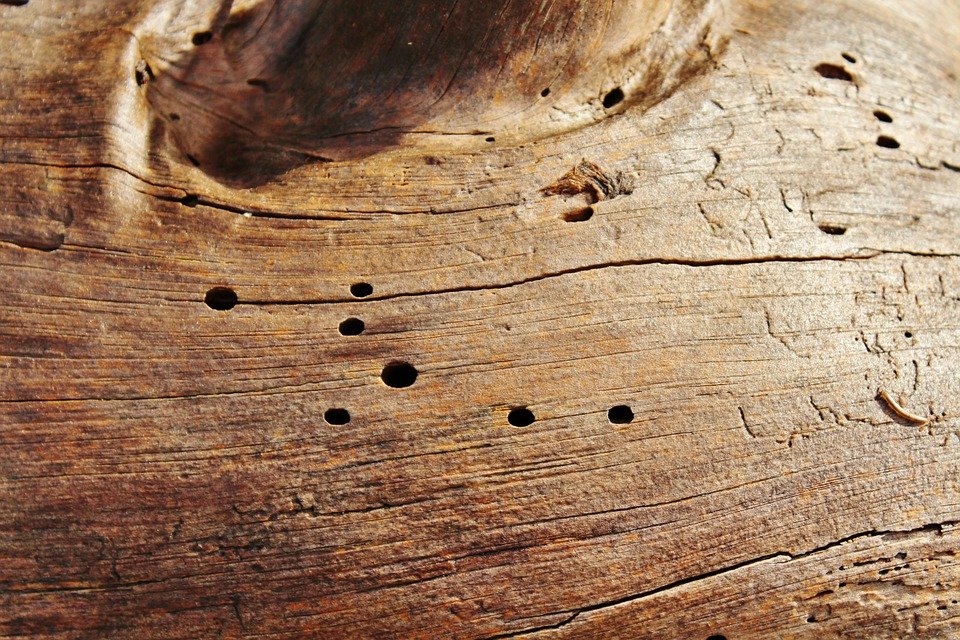Dealing with Woodworm Infestations: What Every Homeowner Needs to Know
Woodworms may not be the first pest you think of, but these tiny invaders can cause major damage to your wooden structures if left untreated. Whether you’re dealing with damaged beams, weakened flooring, or ruined furniture, understanding how to manage and prevent woodworm infestations is crucial. In this article, we’ll cover what woodworms are, how to identify their damage, and what steps you can take to prevent or treat an infestation. For more guidance on handling woodworms, visit Woodworms.
Understanding Woodworms
Woodworms are the larvae of wood-boring beetles that feed on wood. The adult beetles lay eggs in cracks and crevices in wooden surfaces. Once the eggs hatch, the larvae begin to tunnel through the wood, causing significant damage. Over time, the affected wood becomes weakened and can eventually collapse under pressure.
The damage caused by woodworms is often hidden inside the wood, making it difficult to detect early. While older homes are more susceptible, even new houses with untreated wood or high humidity levels can become targets for these pests.
Common Signs of Woodworm Damage
Recognizing woodworm damage early is essential for protecting your home. Here are some common signs to look for:
-
Small Exit Holes: These holes are left behind when the adult beetles emerge. They are usually round and about 1-2mm in diameter.
-
Powdery Dust: This fine, powdery material is expelled by the larvae as they burrow through the wood. It often collects around the exit holes or nearby infested areas.
-
Soft or Weakened Wood: Wood affected by woodworms becomes soft and crumbly. Over time, this makes the wood lose its strength and stability.
-
Visible Beetles: Adult beetles are often found near wooden surfaces. They are typically dark-colored, and they are more noticeable during the warmer months.
The Risks of Ignoring Woodworm Infestations
If left untreated, woodworms can cause severe structural damage to your home. Over time, their tunneling weakens wooden beams, floors, and furniture, potentially compromising the safety of your home. Additionally, the larvae live deep inside the wood, so the damage isn’t always visible at first glance.
By the time you notice the damage, it may have spread to several wooden structures, making it much more costly and complicated to repair. For this reason, it’s essential to take action as soon as possible if you suspect woodworms are in your home.
Preventing Woodworm Infestations
Preventing woodworms is far easier than dealing with an infestation after the damage has been done. Here are a few simple tips to protect your home:
-
Control Moisture Levels: Woodworms thrive in damp environments, so maintaining dry conditions in your home is critical. Ensure that areas like basements, attics, and crawl spaces are well-ventilated, and use dehumidifiers if necessary.
-
Wood Treatment: If you’re installing new wood in your home, consider treating it with a wood preservative to protect it from future infestations.
-
Regular Inspections: Inspect wooden furniture, beams, and flooring regularly. Look for early signs of woodworm activity, especially in older homes or in areas with high moisture levels.
Treatment for Woodworms
If you’ve discovered woodworms in your home, it’s essential to act quickly to minimize damage. Several treatment methods are available:
-
Chemical Insecticides: These are the most commonly used treatments for woodworms. The chemicals penetrate the wood and kill the larvae and beetles. They can be applied using a brush or spray.
-
Fumigation: For large infestations, fumigation can be an effective option. This process involves sealing off the affected area and releasing a gas that eliminates both larvae and adult beetles.
-
Boric Acid: For a more natural alternative, boric acid can be used to treat woodworms. It’s a safer option compared to chemical insecticides and works well to kill larvae.
-
Professional Pest Control: If the infestation is widespread or difficult to treat, calling in a professional pest control service is often the best solution. They have the tools and expertise to tackle the problem effectively and safely.
Repairing Woodworm Damage
Once the infestation has been dealt with, the next step is to repair the damage. For small infestations, you can fill the exit holes with wood filler or epoxy. However, if the damage is extensive, you may need to replace large sections of wood.
It’s particularly important to check structural wood, such as beams and floorboards, for significant damage. If these areas are compromised, it’s best to consult a professional to ensure that the repairs are done properly.
Conclusion
Woodworms may be small, but they can cause significant damage to your home if left unchecked. By identifying the signs early, taking preventive measures, and acting quickly, you can protect your home from these destructive pests. For more information on how to handle woodworms, visit Woodworms, your trusted expert in pest control solutions.

